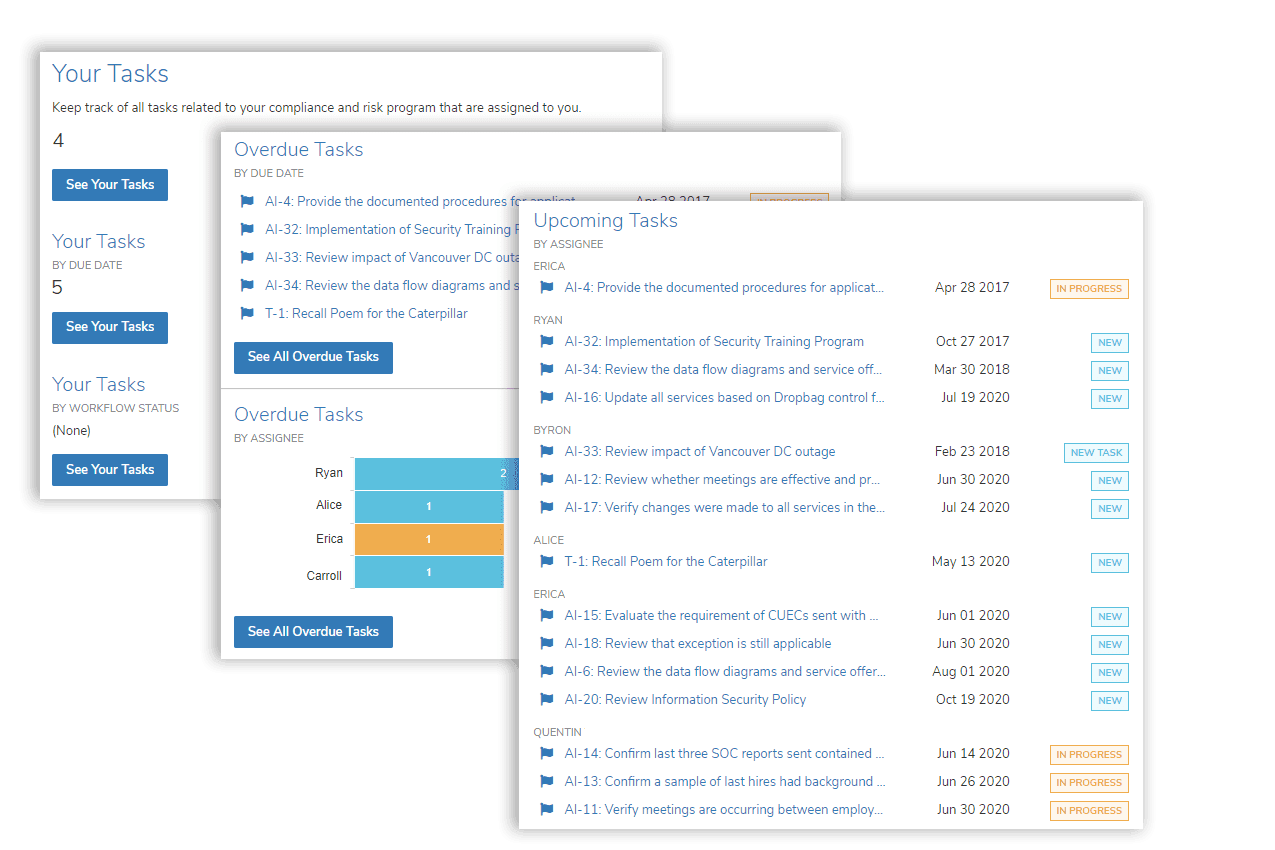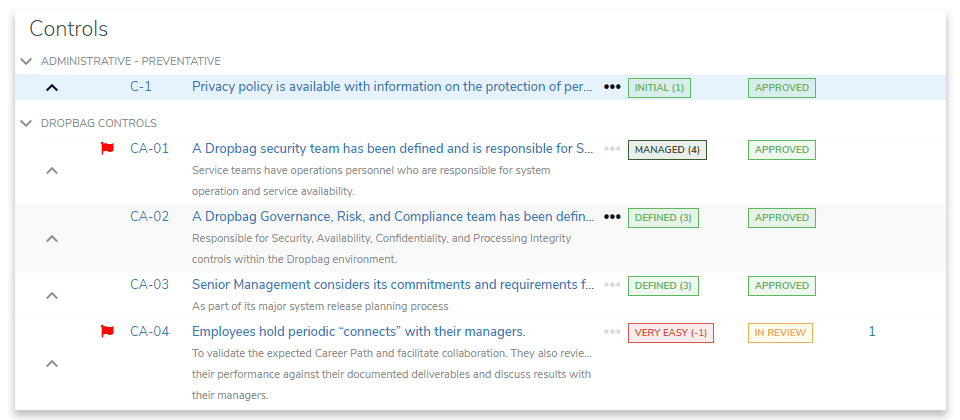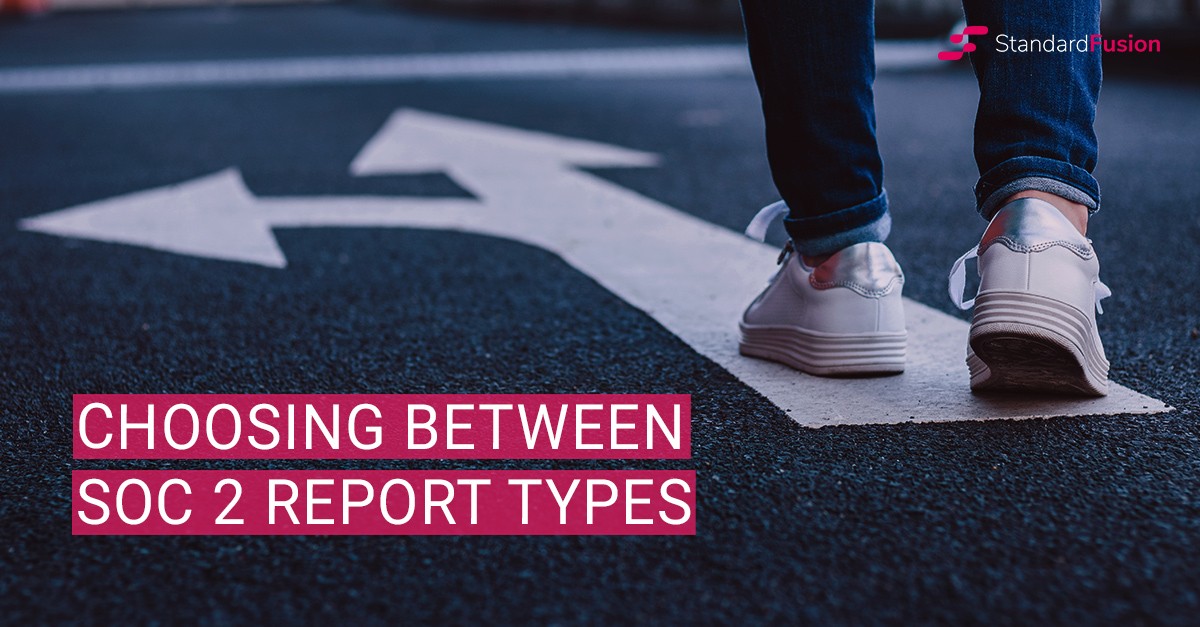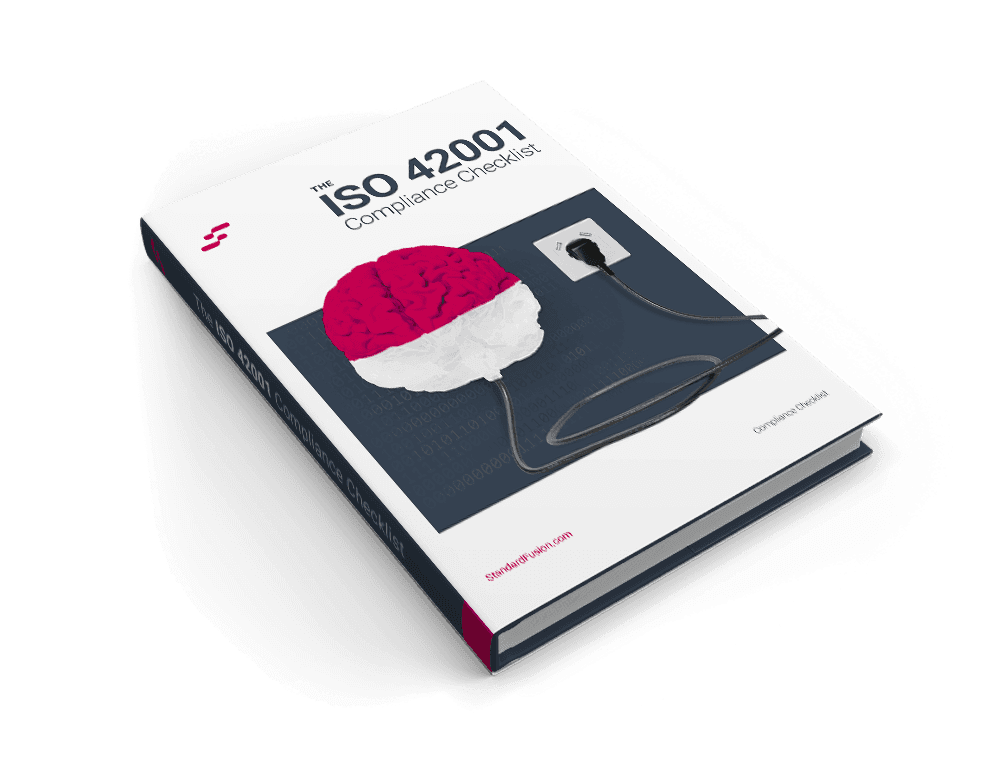Published on: Aug 29, 2020
SOC 2 - Type 1 or Type 2? Everything you need to know
Updated February 6th, 2023
This article breaks down the different types of SOC reports, the benefits of SOC 2 Type 1 and Type 2 compliance, and how you can manage your SOC 2 compliance with ease using a comprehensive GRC tool.
Whether you're just getting started with SOC reporting or looking to upgrade your current compliance strategy, this article has got you covered.
Let's get started!
What is SOC?
Systems and Organization Controls (SOC) are a series of standards designed to measure how well an organization conducts and regulates its financial information and other data. Due to intense pressure to mitigate risk over financial auditing and controls, many organizations require vendors to institute SOC Controls and reporting.
A SOC report is a verifiable auditing report which is performed by a Certified Public Accountant (CPA) or equivalent. It also determines if financial controls are performed, if audits are conducted according to the stated controls of an organization, and the effectiveness of the audits performed.
There are multiple versions of SOC reports:
SOC 1
SOC 2 - Type 1 and 2
SOC 3
In the following sections, you will learn the differences between the types of SOC 2 reports, the types of companies that require them, creating the specific reports, and some ways to manage SOC compliance.
Let's continue!
Types of SOC Reporting
In comparison to SOC 1 and 3, SOC 2 is designed for providers that store customer data in the cloud. It requires companies to establish and follow strict information security policies that encompass privacy, security, availability, processing integrity, and confidentiality of customer data.
SOC 2 Type 1 describes a vendor's systems, and whether it is capable of meeting trust principles as of a specified date. On the other hand, Type 2 describes the operational effectiveness of a vendor's systems and controls during a set period of time.
The SOC 2 Type 1 Report
SOC 2 Type 1 reports detail the suitability and design of the company's controls, its scope, and its management at a given point in time. It demonstrates proof of compliance with the American Institute of Public Accountants ( AICPA) and other recognized accounting bodies' auditing procedures and industry best practices.
Why is it important?
Because it benefits companies by assuring potential customers that their data will be safe in the hands of a SOC 2-compliant company.
There has been increased demand for SOC 2 Type 1 compliant providers as cyber-attacks continue to rise in frequency and sophistication. While not legally required, SOC 2 Type 1 compliance is highly sought after for companies handling customer data, like healthcare providers and financial institutions, to assure their customers that they have protective controls in place.
Depending on how well a company is prepared for their SOC 2 Type 1, they can be audited immediately, and the report created. If a service organization has already performed a readiness assessment, has its controls in place, and well documented, an approved auditor can begin the examination right away.
Everything sounds good, but how long does it take?
Generating this report typically takes between 2 to 4 weeks, unlike the SOC 2 Type 2 report, which takes 6 months to a year.
Making the SOC 2 Type 1 report is ideal for companies assessing multiple potential vendors or looking to engage third parties in a relatively short amount of time.
The Type 1 report requires less spending and effort as auditors require a smaller amount of data to determine compliance at a single point in time. Also, Type 1 compliance is best suited for smaller companies that operate in industries with less sensitive data and service organizations with less stringent security requirements.
The SOC 2 Type 2 Report
Like the SOC 2 Type 1 report, the Type 2 report is a description of a company's system and the suitability of the design of controls, but it also assesses the operating effectiveness of said controls. While there are many benefits to SOC Type 1 compliance, SOC Type 2 provides a much higher level of assurance in comparison.
To achieve SOC Type 2 compliance, a company must pass a thorough examination of its policies and controls over an extended period, requiring companies to dedicate even more time and resources. Most companies will select a period that overlaps the most with the company's financial year.
While there is no required minimum duration for the Type 2 reporting period, the AICPA has suggested companies use a period of 6 months. To provide their clients with a continuous flow of reporting on their controls, companies usually decide in a 12-month reporting period to eliminate a break during this process.
So, is which one is better?
Well, it demonstrates superior data security and control systems to potential customers. Companies with SOC 2 Type 2 compliance gain an advantage from the ability to engage larger, and more security-conscious organizations with their services.
Also, it follows the same general principles as SOC Type 1 but requires additional resources and working hours. SOC 2 Type 2 compliance is easier to acquire for companies with mature controls that are constantly monitored and updated accordingly.
The SOC 2 Type 2 audit is generally sought out by medium to large who operate with sensitive data or in heavily regulated industries with stringent security requirements.
Managing SOC 2 Compliance with StandardFusion
StandardFusion is a comprehensive GRC software, built for organizations of any size to manage their compliance initiatives and security program. Our platform is packed with features to assist with all your SOC 1 or SOC 2 needs including:
Task Management and Automation
Monitor progress, prioritize processes, and manage all your compliance and audit-related tasks in one place. Turn recurring tasks into automated processes so users can gather evidence, track reviews, and understand exactly what action needs to be taken next.

Control Management
StandardFusion allows you to connect each of your organization's controls to a specific framework requirement. Define your mitigating processes, their workflow state, and who is responsible for each control from a centralized repository. Visualize the connections within your security program and manage them the same way that you think about them.

Policy Management
Manage the development, acceptance, and distribution of your policies organization-wide. Save hours of follow-up and reporting by tracking employee acceptance of new policies and assigning of approvals while keeping a record of all policies and past versions in a single place.
Risk Management
Easily create a risk registry in StandardFusion to track identified risks and maintain a record of them. Stay on top of potential issues that could result in unintended outcomes and fulfill regulatory compliance for SOC with an updated risk register.
Dashboards and Reporting
At-a-glance dashboards provide teams with complete visibility into every aspect of their compliance programs and audits, allowing users to quickly identify areas of improvement and address them accordingly. Whether you need high-level executive summaries or detailed compliance reports, leverage the data within StandardFusion and generate insightful reports for all audiences within your organization.

Key Takeaways
Systems and Organization Controls (SOC) are standards for measuring the effectiveness of an organization's financial information and data management practices.
There are multiple versions of SOC reports, including SOC 1, 2, and 3, and two sub-types of SOC 2, Type 1 and 2.
SOC 2 Type 1 reports detail the design and suitability of a company's controls, while Type 2 reports assess both the design and the operating effectiveness of the controls.
Type 1 is best suited for smaller companies with less sensitive data and less stringent security requirements. On the other hand, Type 2 is recommended for larger companies with sensitive data or operating in heavily regulated industries.
Achieving SOC 2 Type 2 compliance requires a thorough examination of a company's policies and controls over an extended period, usually 6 months to a year.
Type 2 demonstrates superior data security and control systems and allows companies to engage larger and more security-conscious organizations.
StandardFusion is a comprehensive GRC software for managing SOC compliance, offering features such as task management, control management, and reporting capabilities.
Regardless of which SOC report you need, StandardFusion is a fully featured GRC platform designed to simplify compliance for any framework. Our software helps you easily plan, execute, and keep up with regulatory requirements for an efficient and effective management experience.
If you are struggling to manage your SOC attestation or any other compliance-related activities, reach out to our team today and book your free demo to see how we can help you!







